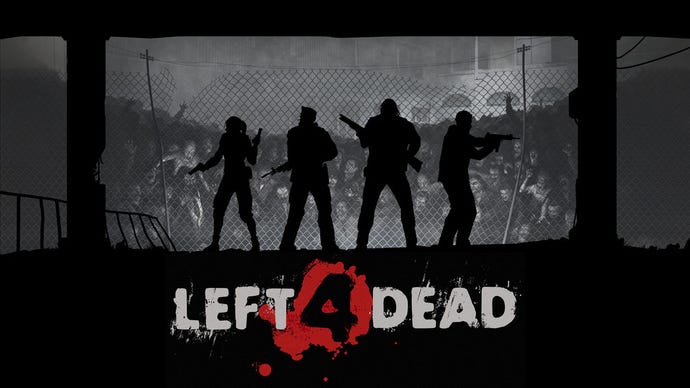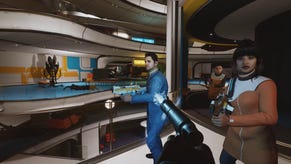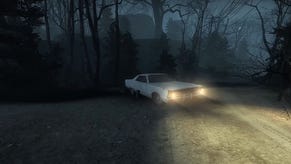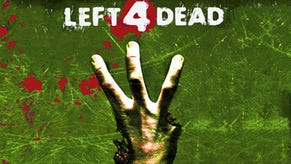15 years on, Left 4 Dead still rules the genre it created
The greatest PVE shooter of all time is now old enough to rent The Godfather.
The fifteenth anniversary of Left 4 Dead arrives this weekend, no doubt firing up countless hazy dorm room memories and making a lot of us feel very old. It gave me a pause of disbelief earlier, as I think it’s the first time I’ve properly realised that I’m now old enough to have still been an adult with a job and children 15 years ago. That seems impossible. In my head, my age minus 15 is “around fifteen”, not “mid twenties”.
Left 4 Dead required no onset of time to seem like a revelation. I’d always been into single-player games, and aside from a stint of grade-tanking obsession with Star Trek: Elite Force’s deathmatch modes (basically Quake II with a Star Trek skin, and me being the world’s biggest virgin in high school) multiplayer games had always left me cold. “The best way to ruin a video game”, I’d have probably said, “is to involve other people”.

But by my mid twenties I had actual proper friends, who I liked, and we all had Xbox 360s. Our social group was spread across the UK – some in Glasgow, some near Edinburgh, some in London, visiting each other was expensive, and these were still the days when video conferencing was in its infancy and reduced human conversation to some kind of ordeal resembling trying to get the lid back on a bottle of juice while standing on a vibro plate. Possible, but any other solution is preferable. And we were millennials, so phoning each other was mostly out of the question.
So, Left 4 Dead became our main social hangout. Particularly the No Mercy campaign – the opening chapter – which, if you were good, was a 30-40 minute tear across a ruined North American city overrun with the infected undead. A desperate dash to the roof of the Mercy Hospital where, several blocks or loading screens away, a helicopter rescue beckoned.
It was thrilling. Engaging. Sumptuously paced. The emergent narrative of each run through was handled by a rudimentary AI known as The Director, which would control the flow of the game based on certain metrics: your team’s success, levels of stress (it was rumoured that it did this by analysing the panic in your voice feed, but I think that’s just whatever the 21st century equivalent of an Old Wives Tale is), how much damage you’d taken, how many health aids you’d used, etc etc. It was smart enough to give you a breather every now and then to let your heart rate settle, rather than clobbering you with endless danger. The sense of peril would never subside, but there was always time to regroup.
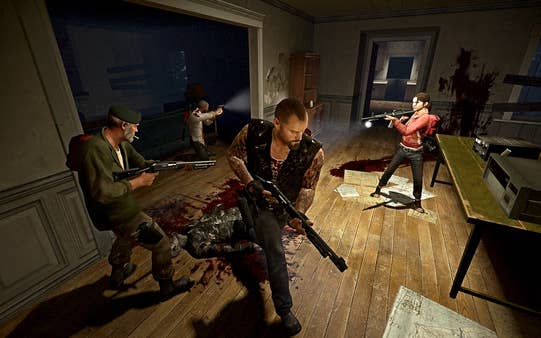
The director almost felt like part of the team. The twisted counterpart to a D&D dungeon master, more concerned with keeping your pants soiled than making sure you had any fun. Not that fun was in short supply: L4D sessions were, more often than not, hilarious. One person in the group would always end up being the director’s favourite plaything, seemingly getting shafted with all the bad spawns. My mate Richie once got locked in a supply cupboard with a giant boss undead called The Tank. It was so huge we could only watch its elbows clipping out of the door as it pummelled our helpless friend to death. And the ordeal was so terrifying that he actually made noises as if he was being beaten up, a sound punctuated by the hyperventilating laughter of the rest of us.
I’ve never experienced anything quite like L4D’s director before or since, aside from L4D2 of course, which was basically just L4D with more maps and a slightly different rogues’ gallery. But despite the complexity that talk of an all-seeing AI director implies, the original Left 4 Dead’s main strength was in its simplicity. You had two weapon slots: a main gun which you needed to collect ammo for, and a sidearm with infinite rounds. The objectives were crystal clear: reach the safehouse. Go here. Press the button. Kill the thingies. There was nothing like the annoying endless rigmarole that hampers things like GTA Online, for example. No hub area full of pointless interactive nonsense and a weird card system, like in Back 4 Blood, which is tragically probably the closest we’ll ever get to Left 3 Dead. Are any of your mates still playing it? None of mine are.

I’m not a multiplayer person. I’m crap at shooters and I’m really not that competitive, so for me gaming is mostly a solo concern and all the happier for it. But Left 4 Dead was special. It was an accessible co-op shooter with solid narrative chops, clear rules, and with enough levity to accommodate a bit of chat with your pals. And it inspired an entire genre of clones and homages which all tried to put their own stamp on the formula with varying levels of success. Some were really good, others not so much. Most of them just seemed to fall into the trap of adding too many layers to the lasagne in search of a USP. Even L4D’s direct sequel, released only a year later and carrying over most of its systems (and all of its content as DLC), fiddled with the nobs a bit too much. It just wasn’t quite the same, and our time in the world of Left 4 Dead would fizzle out within weeks, the magic having evaporated.
Here’s to Left 4 Dead, the best there ever was.
